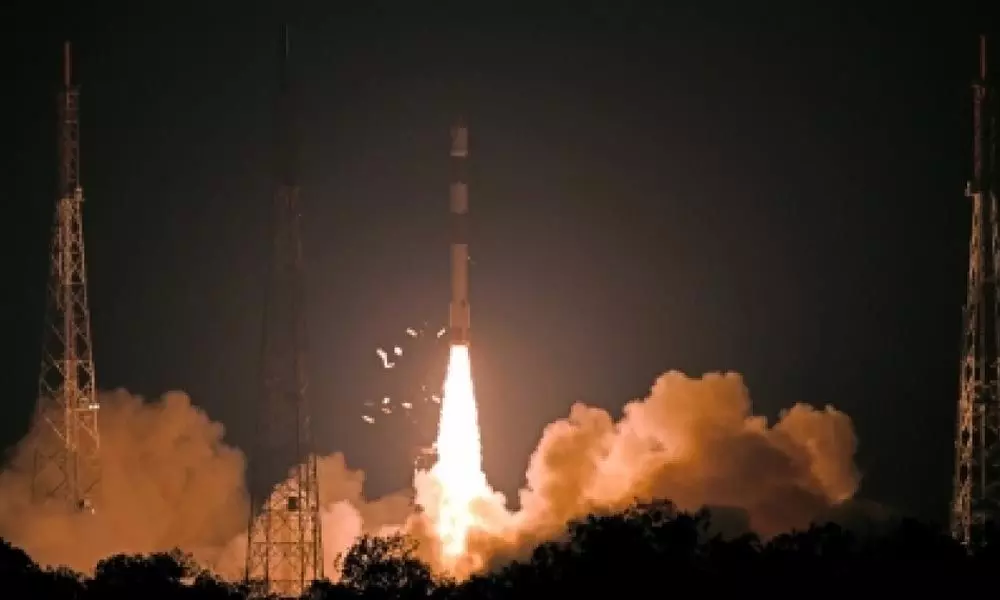India to cross 300 foreign satellite launch mark

India is expected to cross the milestone of launching 300 foreign satellites on Wednesday morning when its rocket Polar Satellite Launch Vehicle-XL (PSLV-XL) puts into orbit 13 nano satellites from the US.
Sriharikota (Andhra Pradesh): India is expected to cross the milestone of launching 300 foreign satellites on Wednesday morning when its rocket Polar Satellite Launch Vehicle-XL (PSLV-XL) puts into orbit 13 nano satellites from the US.
The American satellites are piggy backing on the rocket's main luggage, India's advanced earth observation satellite Cartosat-3.
Till date India with its PSLV rocket has put into orbit 297 foreign satellites. When the PSLV rocket on Wednesday puts into orbit 13 American nano satellites then the total number of foreign satellites that India has launched will touch 310.
Curiously, the order to launch the American satellites was bagged by the NewSpace India Limited formed only in March 2019, with an almost identical business plan to that of Antrix Corporation, the first commercial arm of the Indian Space Research Organisation (ISRO).
Since its incorporation in 1992, Antrix Corporation has handled such third party satellite launch contracts, leasing of communication satellite transponders, marketing of data from remote sensing satellites, building and marketing of satellites as well as satellite mission support services, and establishing ground infrastructure for space applications.
In addition to the above lines of business, NewSpace India will also be the nodal agency for the production of PSLV and Small Satellite Launch Vehicles (SSLV) through industry consortiums and partners.
Meanwhile, all is set for the rocket launch, which is expected to blast off at 9.28 a.m. from the second launch pad here.
The 1,625 kg Cartosat-3, India's new earth observation satellite will send sharp, clear images for urban planning, rural resource and infrastructure development, coastal land use and land cover and also for strategic/defence purposes.
The Indian space agency officials said they would supply the required images for various agencies. It is for the user agency to decide on the image use.
The images captured by the satellite can also be used for surveillance purposes while ISRO is silent on this aspect.
The satellite's payload has the capability of taking sharp pictures with a ground resolution of 0.25 metre in Panchromatic and 1 metre ground resolution or ground sample distance (GSD) in 4 Band Multispectral modes with a swath of 16 km, said ISRO.
The Indian space agency also said, Cartosat-3 has many new technologies/elements like highly agile structural platform, payload platform, higher rate data handling and transmission systems, advanced onboard computer and new power electronics, dual gimbal antenna and others.
The PSLV-XL rocket standing around 44.4 metres tall and weighing about 320 tons with a one-way ticket will hurtle itself towards the skies ferrying Cartosat-3 and the American satellites.
About 17 minutes into the flight the rocket will eject Cartosat-3 into an orbit of 509 km at an inclination of 97.5 degrees.
Soon after, the first of the American nano satellites will be put into orbit. The final nano satellite will be ejected into its intended orbit at about 27 minutes from the rocket's lift-off.
According to ISRO, 12 of the US nano satellites, named as FLOCK-4P, are earth observation satellites and the 13th is called MESHBED, a communication testbed satellite.
The PSLV-XL is a four-stage/engine expendable rocket powered by solid and liquid fuels alternatively. The rocket has six strap-on booster motors to give additional thrust during the initial flight stages.

















